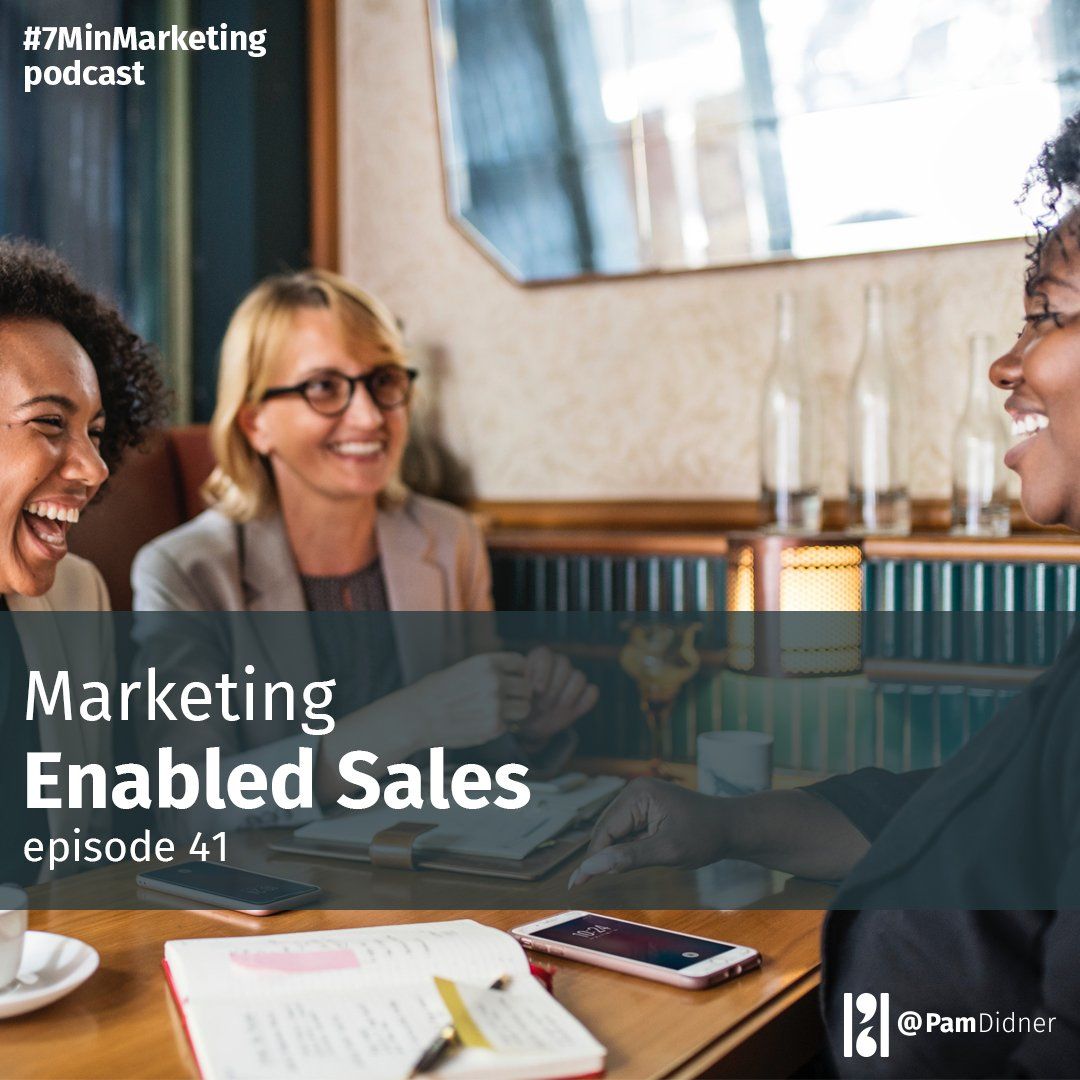
Welcome to another episode of 7-Minute Marketing with Pam. My name is Pam Didner. I love sharing a little dose of B2B, digital, content marketing and sales enablement, seven minutes at a time.
Ok, I did several episodes about my trip to Lima. Now, let’s come back and focus on answering your questions. I did a webinar last week with Mintent, a Content Marketing Platform company. The topic of the webinar was ‘3 creative ways that marketers can enable sales across regions.’ At the end of the webinar, one attendee, Megan, asked a question:
How do you draw the line between arming sales with marketing material and getting inundated with too many requests for tasks such as writing sales correspondence emails with prospects?
How to draw the line
I totally understand Megan’s concerns. That’s exactly what happens sometimes. Marketers do everything they can to support sales. Over time, without noticing, marketers become admins for the sales team. It’s called scope creep… The best way to avoid that is to clearly communicate what you will do and won’t do. This is called a Service Level Agreement (SLA).
When I was supporting sales teams, I was working with 50-60 field people and supporting several key accounts. I received a lot of requests and questions from them on a daily basis. Initially, I didn’t have a good idea what I needed to do to support them, and it quickly became unbearable. After several months, I started recognizing there was a pattern.
The requests generally broke down into the following questions:
- Our overall marketing strategy
- What can marketing do to help generate leads?
- What can we say about our products and services?
- Where is the content located and what content can be used for different stages of the sales journey?
So, I structured my support model based on some of the most frequent requests. For example, I made sure we have a short deck to talk about the overall marketing strategy. I had a lead list or pipeline that I could share. Also, I provided a monthly update on some of the key marketing activities at sales meetings and had a messaging framework in place. Most importantly, I identified 5-10 content pieces per sales stage that I believed would be helpful to the sales team and put it on a datasheet for their easy access.
Speaking of content and resources, I may not know all the content out there, but I know how to search and who to ask to find out what content is available. There were times I directed them to the appropriate contact and wouldn’t get in the middle of it. There were also times I’d politely tell them I couldn’t help. Over a period of time, they got to know what I could do for them, when they should come to me and when they shouldn’t. I was still busy, but it was manageable.
Marketing-Enabled sales example
When I was writing my Sales Enablement book, I had a chat with Sasha who worked in a growing start-up. She was in marketing, but she did everything for her 5-person sales team from presentation creation, sales pitch brainstorming to crafting mini-e-mail campaigns for her sales team. That worked well for her. Her sales team loved her and she enjoyed the work. She did acknowledge that her scope couldn’t scale if the sales team grows to, say, 15-20 people. The company will need to hire another person like her to support the bigger sales team or she needs to change her support model.
So, Megan, as you can see that Sasha and I had different support models. You’ll need to structure how you want to support your sales team based on what you will do and won’t do. You also need to take into account the maturity stage of your company and sales team.
Clearly articulate what your roles and responsibilities are. Bear in mind that the service level agreement is a guideline, not an absolute rule. From time to time, I’d make exceptions, this is especially true if the sales team is on the cusp of winning a big account, if a key account needs some last minute urgent support. At the end of the day, it’s about growing business for your company. You do what you need to do to support it.
A quick summary of some ideas that work for me:
- List 5 questions that the salespeople ask most frequently. See if you can create standardized content or presentations.
- Create a list of recommended content for each sales stage
- Have a good understanding of content by-products, technologies, personas or the purchase cycle. Make a quick cheat sheet for yourself. You need to update it on a regular basis based on product, technology, persona changes.
- Know the subject matter experts and direct the sales team to them if necessary
- Create a service level agreement and get their buy-in
I hope these tips are helpful. Do you have any useful tips that you can share? You know where to find me.
Please, send me your marketing questions and thoughts here or via Twitter @pamdidner. Love to hear from you.
Be well. Until next time.



